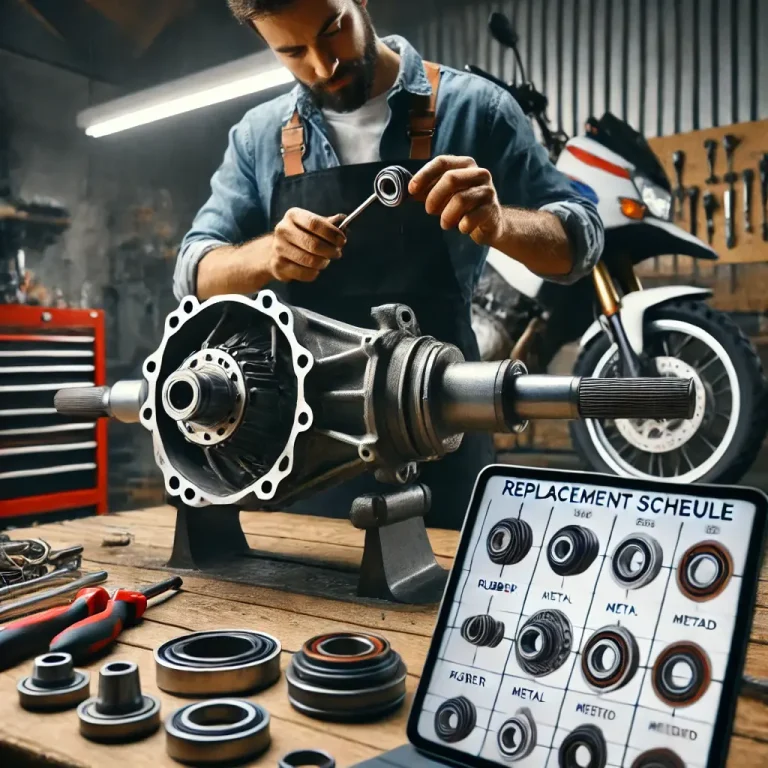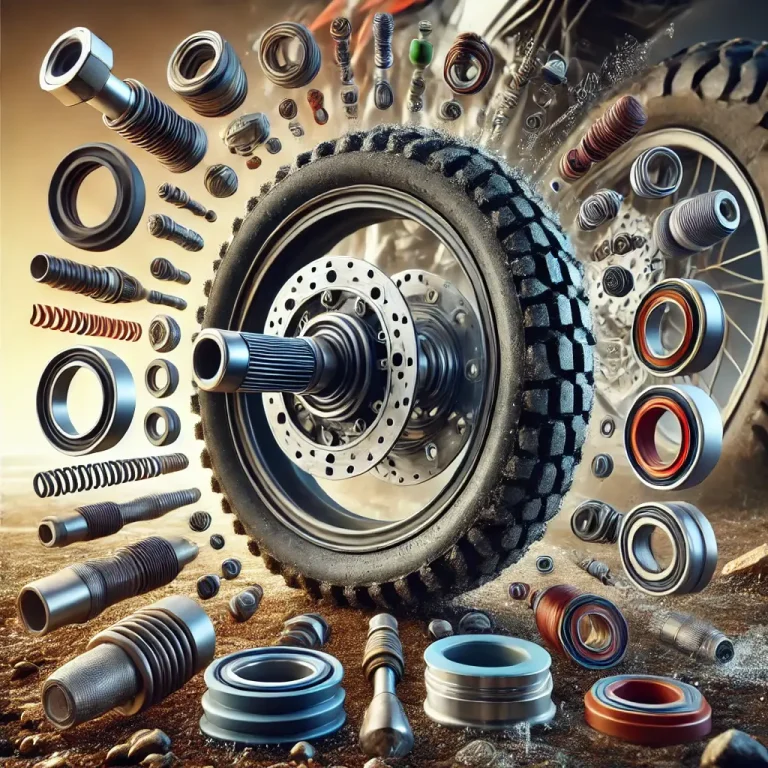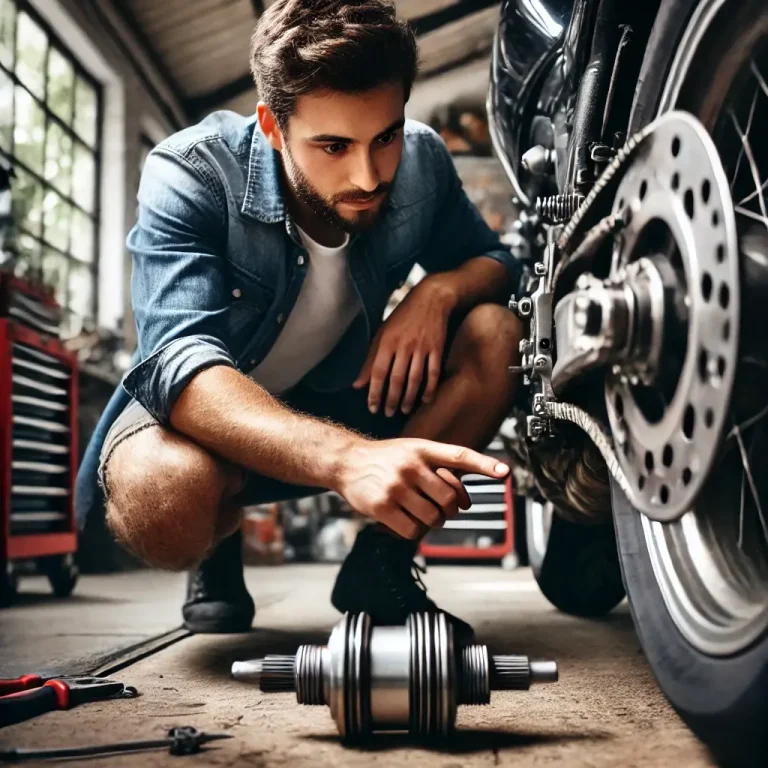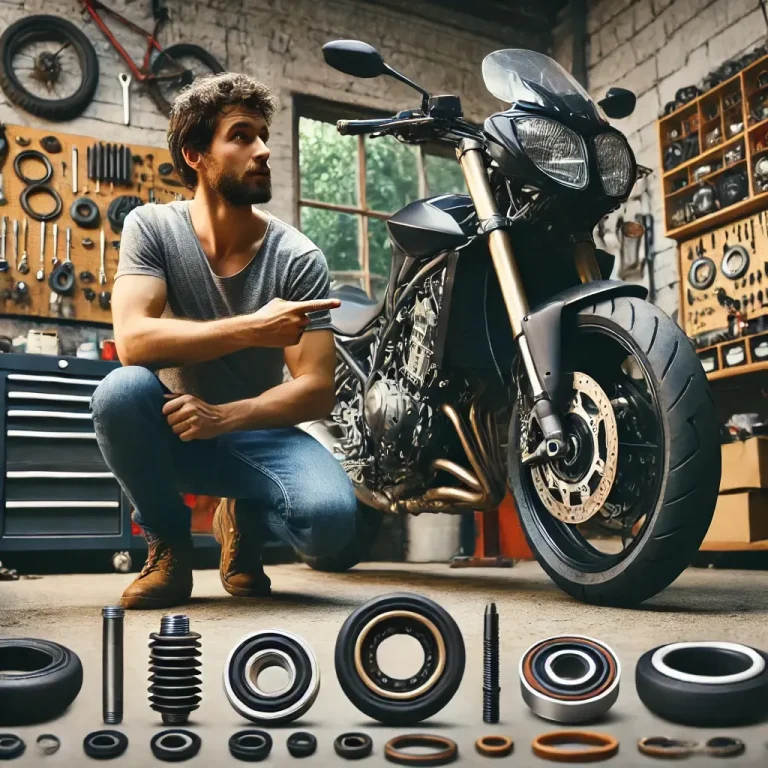Essential Maintenance Tips for Motorcycle Axle Seals
The axle seal in your motorcycle might not be the first thing that comes to mind when you think about maintenance, but it plays a critical role in keeping your ride smooth and safe. In essence, an axle seal keeps the differential or gearbox fluid from leaking, ensuring that the internal components remain properly lubricated. Failing to maintain the axle seal could lead to oil leaks, damage to other parts, and eventually, costly repairs.
In this article, we’ll walk you through everything you need to know about maintaining your motorcycle’s axle seals. From spotting early signs of wear to replacing a damaged seal, this guide covers it all.
Signs of a Worn or Damaged Axle Seal
Oil Leaks
One of the most obvious signs that your axle seal is damaged is an oil leak. You’ll notice a small puddle of oil under your motorcycle after it has been parked for some time. If left unchecked, the oil level will drop, and your motorcycle’s internal components will not be properly lubricated.
Unusual Noises
A worn axle seal can also cause unusual noises when riding. You might hear grinding or whining sounds, which could be a sign that the seal isn’t holding fluid as it should. These noises usually indicate that internal components are not being lubricated properly.
Reduced Handling Performance
Leaking oil can also affect your motorcycle’s handling. A lack of lubrication can create drag on certain components, making it harder to control your bike. If your ride feels rough or less responsive, it’s time to inspect the axle seal.
Common Causes of Axle Seal Wear
Age and Wear
Like many components on a motorcycle, axle seals degrade over time. Heat, friction, and constant movement cause the rubber to break down. Over time, the seal will lose its flexibility, leading to leaks.
Contaminants
Dirt, dust, and road debris can find their way into the axle area, eventually damaging the seal. Contaminants can create grooves or cause the rubber to deteriorate faster than usual.
Incorrect Installation
If the axle seal was not installed properly or was damaged during installation, it may not function as it should. Improperly seated seals can allow oil to leak, even when the seal itself is in relatively good condition.

The Importance of Regular Axle Seal Inspection
Preventative Maintenance
Regularly inspecting your axle seals as part of your routine maintenance can help you catch issues early before they turn into more expensive repairs. Checking for signs of wear can extend the life of your motorcycle and keep it running smoothly.
Identifying Issues Before They Become Major Problems
By inspecting your axle seal regularly, you can identify any potential issues before they cause damage to other parts of your bike. This will save you money and help you avoid unexpected breakdowns.
How to Inspect a Motorcycle Axle Seal
Visual Inspection
The first step in inspecting your axle seal is a simple visual check. Look for any visible signs of wear, such as cracks in the rubber or oil buildup around the axle.
Checking for Leaks
Place your motorcycle on a clean surface and check for any oil leaks around the axle area. If you notice any puddles or even small droplets of oil, it’s a sign that your axle seal may be compromised.
Inspecting for Damage
With the axle off the bike, you can inspect the seal itself more closely. Check for tears, cracks, or other visible damage. If the seal looks worn out, it’s time to replace it.
Step-by-Step Guide to Replacing a Motorcycle Axle Seal
Tools You’ll Need
- Socket wrench set
- Rubber mallet
- Replacement axle seal
- Jack or motorcycle stand
Removing the Axle
Start by placing your bike on a stand to elevate the wheel. Use a socket wrench to remove the axle nut, then gently pull the axle out of the wheel hub. Be careful to support the wheel so it doesn’t fall once the axle is removed.
Removing and Replacing the Seal
Use a rubber mallet to tap out the old seal carefully. Once removed, clean the surrounding area, and apply a light coat of oil to the new seal. Tap the new seal into place with the mallet, ensuring it’s seated properly.
Reassembling the Axle
Once the new seal is installed, carefully slide the axle back into place and tighten the axle nut. Make sure everything is secure before lowering the bike back to the ground.
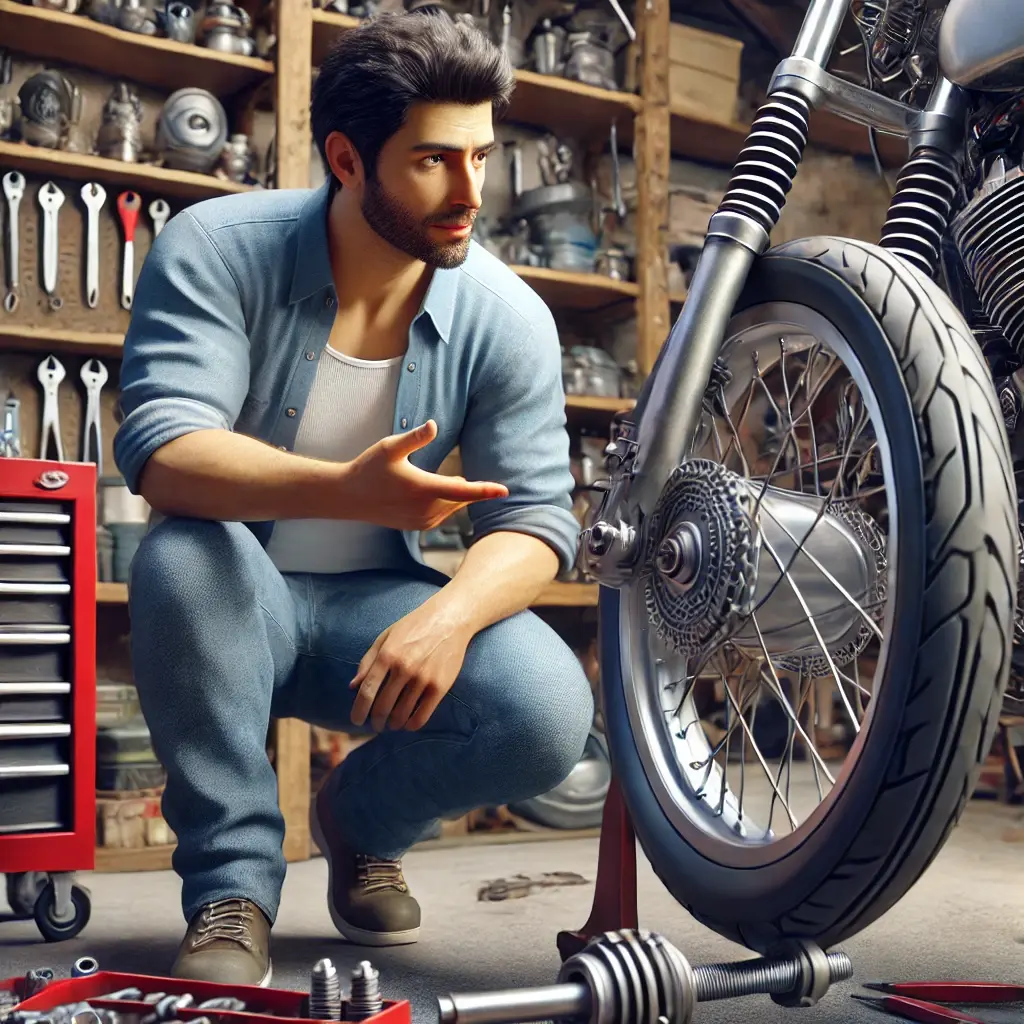
Choosing the Right Replacement Seal
OEM vs. Aftermarket Parts
When replacing your axle seal, you have the option to choose between OEM (Original Equipment Manufacturer) parts or aftermarket seals. OEM parts are made by the bike’s manufacturer and are guaranteed to fit, while aftermarket parts may be cheaper but could have quality variations.
Material Considerations
Axle seals can be made from different materials, including rubber, silicone, and neoprene. Rubber is the most common, but silicone seals are more durable and resistant to high temperatures. Choose a material that suits your riding conditions.
Best Practices for Preventing Axle Seal Damage
Keep Your Motorcycle Clean
Dirt and debris can damage axle seals over time. Regularly washing your motorcycle, especially around the axle area, can help prevent contaminants from causing wear.
Avoid Overloading Your Motorcycle
Overloading your bike puts extra stress on the axles, which can lead to premature wear on the seals. Make sure to follow the manufacturer’s recommended weight limits to avoid unnecessary strain.
Regularly Check Oil Levels
Low oil levels can cause excessive wear on the axle seal. By regularly checking your oil levels and topping off as needed, you’ll reduce the risk of seal damage.
Professional Help vs DIY: When to Call a Mechanic
Simple Fixes You Can Do Yourself
If you’re comfortable with basic motorcycle maintenance, replacing an axle seal is a job you can handle on your own. The key is to have the right tools and follow the steps carefully.
Complex Issues That Require a Mechanic
If you’re unsure about the source of a leak or if there are additional issues with your axle, it’s best to consult a mechanic. Some problems require specialized tools or expertise, and it’s better to leave those to the professionals.
Conclusion
Maintaining your motorcycle’s axle seal is an important part of overall bike care. By regularly inspecting for signs of wear, keeping your bike clean, and replacing seals when necessary, you can prevent costly repairs and ensure a smooth ride. Whether you choose to tackle this task yourself or seek professional help, keeping your axle seal in good condition is essential for the long-term health of your motorcycle.
FAQs
What happens if I ignore a leaking axle seal?
Ignoring a leaking axle seal can lead to a loss of lubrication, damaging other components and eventually causing breakdowns.
How often should I inspect my axle seal?
It’s a good idea to inspect your axle seal every few months or whenever you perform routine maintenance.
Can I ride with a damaged axle seal?
Riding with a damaged axle seal


